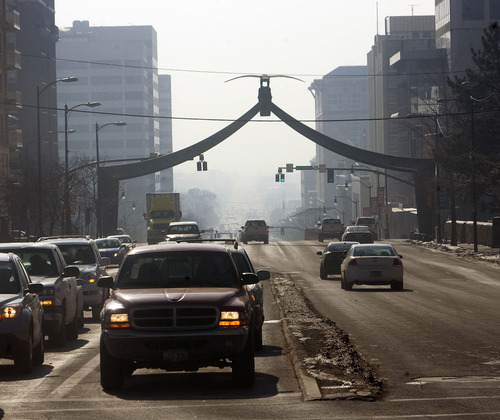This is an archived article that was published on sltrib.com in 2011, and information in the article may be outdated. It is provided only for personal research purposes and may not be reprinted.
Utahns are famous for their 72-hour kits and earthquake preparedness plans. So why not a bad-air readiness plan, too?
That's the thinking of the health advocacy group, Breathe Utah. It has developed an online planning tool for people who want to be ready for the high-pollution periods that northern Utah suffers every winter — times when fine-particle pollution builds up in the cold air that has been trapped underneath a high-pressure front.
"It helps people plan in advance," said Erin Mendenhall, Breathe Utah's volunteer coordinator. "That makes it easier when an inversion sneaks up on you like today."
Cameron Cova, Breathe Utah's president, added that emergency plans help keep families safe. "Although the impact of air pollution is not as immediately obvious as some threats, research confirms that the health consequences are severe."
The first step is simple: keeping up with air-quality conditions via the news media or at http://www.cleanair.utah.gov/youcando/aqAlerts.htm.
The second step involves helping individuals devise strategies to reduce pollution and its impact on their family members.
The Breathe Utah's air-quality action plan tool guides users looking to reduce their own pollution output, said Mendenhall. Telecommuting, using public transportation and other simple strategies can help cut pollution from cars and trucks, which account for about 50 percent of wintertime pollution.
In addition, the Web page offers guidelines on exercising outdoors during bad-air periods. "It helps you protect your own health," said Mendenhall, "and the health of the community."
Make an air plan
O For step-by-step instructions on how to make your own air-quality emergency plan, see the Breathe Utah website • http://www.breatheutah.com.



